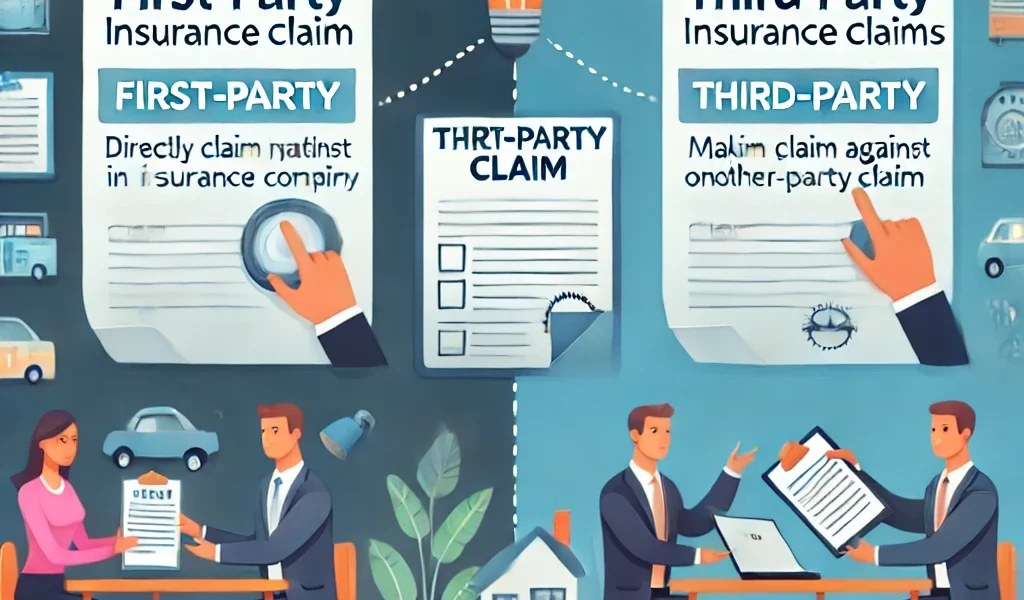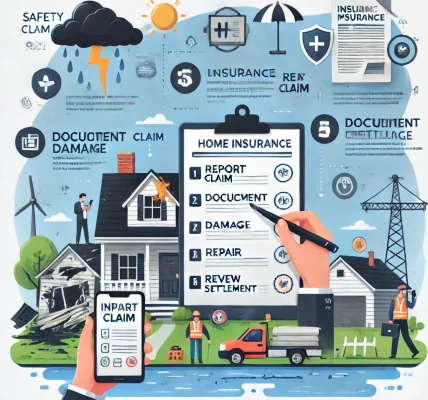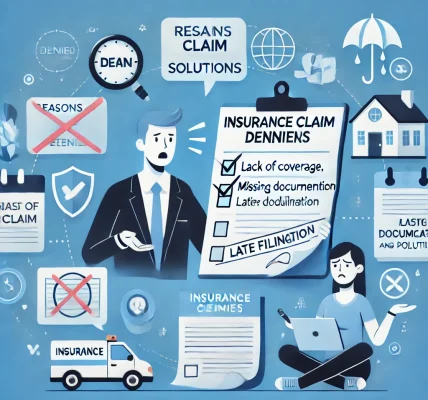Insurance claims are essential for protecting individuals and businesses from financial losses. However, understanding the difference between third-party and first-party insurance claims is crucial for ensuring a smooth claim process. This DIY guide will explain the key differences, processes, and best practices for handling these claims effectively.
1. Understanding First-Party and Third-Party Insurance Claims
What is a First-Party Insurance Claim?
A first-party insurance claim is one in which the policyholder files a claim directly with their own insurance company for coverage under their policy. These claims are made when the insured experiences a covered loss, such as property damage, health expenses, or vehicle damage.
Examples of First-Party Claims:
- A homeowner filing a claim for fire damage to their house.
- A driver filing a claim under their own collision coverage for damage to their car.
- A business owner claiming loss of income due to business interruption.
What is a Third-Party Insurance Claim?
A third-party insurance claim is when an individual files a claim against someone else’s insurance policy. This occurs when a third party (not the policyholder) suffers damages or injuries caused by the insured.
Examples of Third-Party Claims:
- A pedestrian filing a claim against a driver’s liability insurance after being hit by a car.
- A customer suing a business for an injury that occurred on their premises.
- A homeowner filing a claim against a contractor’s liability insurance for faulty work.
2. Key Differences Between First-Party and Third-Party Claims
| Feature | First-Party Claim | Third-Party Claim |
|---|---|---|
| Who files the claim? | The policyholder files the claim with their insurer. | A third party files a claim against the policyholder’s insurance. |
| Who is responsible for payment? | The insurer pays the policyholder for covered damages. | The insurer pays the third party if the policyholder is found liable. |
| Examples | Car accident damage to your own vehicle, health insurance claims. | Liability claims, injuries caused by the policyholder. |
| Claim Approval | Policyholder must prove loss under their policy terms. | The claimant must prove that the policyholder was at fault. |
| Legal Complexity | Generally straightforward. | Can involve legal disputes and liability investigations. |
3. How to File a First-Party Insurance Claim
Step 1: Notify Your Insurer Immediately
- Contact your insurance provider as soon as the loss occurs.
- Provide details of the incident, including date, time, and cause.
Step 2: Gather Evidence
- Take clear photos and videos of the damage.
- Keep receipts for any expenses related to repairs or temporary fixes.
- Obtain any relevant police or incident reports.
Step 3: Complete the Claim Form
- Fill out the insurer’s claim form accurately.
- Attach necessary documents, including repair estimates and medical bills.
Step 4: Work with the Insurance Adjuster
- The insurer may send an adjuster to inspect the damage.
- Cooperate fully and provide any requested documentation.
Step 5: Claim Settlement and Payment
- If the claim is approved, the insurer will issue payment based on policy coverage.
- If denied, review the denial letter and consider an appeal if necessary.
4. How to File a Third-Party Insurance Claim
Step 1: Gather Information About the Incident
- Collect details of the at-fault party, including their insurance provider.
- Take photographs and witness statements to support your claim.
Step 2: File a Claim with the At-Fault Party’s Insurer
- Contact the other party’s insurance company to initiate the claim process.
- Provide evidence proving their policyholder was responsible.
Step 3: Cooperate with the Insurance Investigation
- The insurer will investigate to determine liability.
- Be prepared to give statements and provide documentation.
Step 4: Negotiate the Settlement
- The insurance company may offer a settlement for damages.
- If the amount is insufficient, negotiate or seek legal assistance.
Step 5: Legal Action (If Necessary)
- If the insurer denies liability or offers an unfair amount, legal action may be required.
- Consult an attorney if the dispute escalates.
5. Common Reasons Insurance Claims Get Denied
For First-Party Claims:
- Lack of coverage – The claim is outside the policy’s scope.
- Late filing – Failing to report the claim within the required timeframe.
- Insufficient documentation – Lack of proof supporting the claim.
- Failure to mitigate damages – Not taking steps to prevent further loss.
For Third-Party Claims:
- Disputed liability – The insurer does not agree that their policyholder is responsible.
- Insufficient evidence – Lack of proof of damages or negligence.
- Exceeding policy limits – The claim exceeds the insurance coverage amount.
- Contributory negligence – The claimant is found partially responsible for the loss.
6. Tips for a Successful Insurance Claim
- Understand Your Policy: Know your coverage and exclusions.
- Document Everything: Keep detailed records of damages, costs, and communications.
- File Claims Promptly: Report the incident as soon as possible.
- Be Honest and Accurate: Providing false information can lead to claim denial.
- Seek Legal Advice If Necessary: For disputed claims, consulting an attorney may help.
7. Frequently Asked Questions (FAQs)
Q1: Can I file both a first-party and third-party claim for the same incident?
Yes, in some cases, such as car accidents, you may file a first-party claim with your insurer and a third-party claim with the at-fault party’s insurer.
Q2: How long does it take to settle a claim?
First-party claims may take a few weeks, while third-party claims can take longer due to liability investigations.
Q3: What should I do if my third-party claim is denied?
If denied, you can provide additional evidence, negotiate, or seek legal assistance.
Q4: Is it possible to appeal a first-party claim denial?
Yes, you can appeal by submitting additional documentation or requesting an independent review.
Q5: Do I need a lawyer for an insurance claim?
For straightforward claims, a lawyer is not necessary. However, for disputed claims or large settlements, legal assistance can be beneficial.
Final Thoughts
Understanding the difference between first-party and third-party insurance claims is vital for protecting your rights and ensuring fair compensation. By following best practices, maintaining accurate records, and being proactive, you can navigate the claim process efficiently and maximize your chances of a successful settlement.




